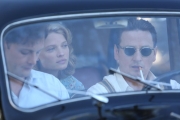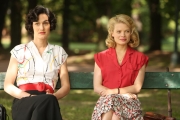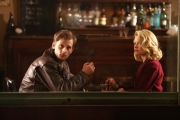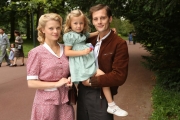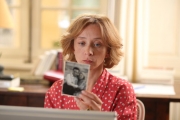Synopsis
In her mid-thirties, Anne still knows practically nothing of her family’s past. After her mother’s death, Anne discovers old photos and letters that convince her to take a closer look at her parents’ life after the concentration camps of World War II. As she closes in on a discovery she did not expect, her father grows ever more ill, and may take the family secret to his grave. In a journey that stretches from post-war France to the 1980s, Anne’s destiny intertwines with her father’s past until they form a single, unforgettable story.
Credits
Director: Diane Kurys
Screenplay: Diane Kurys
Producer: Alexandre Arcadi, Diane Kurys
Cast
Benoît Magimel • Mélanie Thierry
Nicolas Duvauchelle • Sylvie Testud
Schedule & Presentation
![]() Presentation by Festival co-directors
Presentation by Festival co-directors
More information
Choose a picture to see the filmography (source : IMDB)
![]()
From the opening credits, we plunge into your private world…
From the outset, I incorporated personal photos in the film credits. Towards the end of the production, I also added shots from my own films: I wanted to entangle my own life and my characters’ journey, since for me, all is mingled! In fact, in my films Peppermint Soda, Entre Nous, C’est la Vie and Pour une femme make up a coherent whole that tells the story of “my origins”.
The relationship with the father remains throughout the film.
Whereas Entre Nous was a film about my mother, this film speaks of my father –a man I did not know well and who, I was told, I resemble. Pour une femme is the portrait of a betrayed man. By his brother, by his wife, by the Communist Party, by life…
Mélanie Thierry plays Léna, your mother.
It was difficult to find Léna because she has already been interpreted before – by actresses Isabelle Huppert and Nathalie Baye, among others. Mélanie quickly became the only choice: she has a lot of talent, grace and range of emotion, and is incredibly cinegenic. I love to see her moving in the apartment in her red housecoat with white polka dots. The same housecoat worn by all the Lénas in my films…
The significance of communism in the postwar years, as well as in Mitterand’s time, plays a large role in the film.
The story takes place in 1947. The French Communist Party (PCF) has just won the elections, but refusing to support the war in Indochina and encouraging the strike at Renault, force the Communist ministers to leave the government in May of the same year. They will return only in 1981, and history will repeat itself three decades later: Mitterrand’s “liberal” turn will lead the PCF to relinquish power once again in May 1984. Thirty years separate the two periods, the famous “Trente Glorieuses”, a period of strikingly economic growth for France.
Did you try to differentiate the two time periods visually?
We shot the film the old way, using celluloid support! To render the first time period, we eliminated certain hues because the 1950s have a definite color in the collective imagination. For the 1980s, we went to more colorful hues. It is important to be that accurate when you make a period film.




